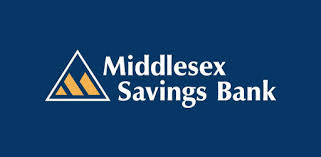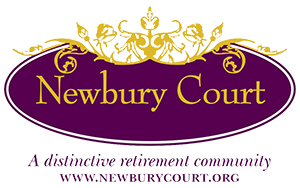Search
Friday, March 1, 2013, First Parish of Sudbury, Unitarian Universalist
Saturday, March 2, 2013, Emmanuel Church, Boston
Trio in D Major for fortepiano, flute, and cello, op. 29 ............ Ignace Pleyel (1757-1831)
Allegro
Andante
Rondo (Allegro) — Allegro
Piano Trio in Eb Major, op. 3, no. 3 ............ Nicolas Séjan (1745-1819)
Allegro
Andante
Rondo (Allegro assai)
Intermission
Sonata in D Minor for fortepiano and violin, op. 9, no. 3 ............ Nicolas-Joseph Hüllmandel (1756-1823)
Allegro
Adagio
Allegro
Trio in G Major, op. 77, no. 1 for flute, violin, and cello ............ François Devienne (1759-1803)
Allegro
Pastorale Grazioso—Allegro
Sonata in A Major, op. 1, no. 2 for fortepiano, flute, violin, and cello ............ André-Ernest-Modeste Grétry(1741-1813) Allegro moderato
Larghetto
Allegretto
Suzanne Stumpf, flute; Sarah Darling, violin
Daniel Ryan, cello; Michael Bahmann, fortepiano
Program Notes
The musical scene in Paris during the late eighteenth century was one of ever-increasing innovation and internationalization. Through public series, such as the Concert Spirituels and its successors, the Parisian public could hear instrumental virtuosos and compositions from all corners of Europe, including works of Haydn and Mozart written expressly for Parisian venues. Paris’s publishing houses, among the most prolific in Europe, brought out a steady stream of new works both domestic and foreign. Although musical life was disrupted during the Revolution, it subsequently returned with renewed vigor.
Among the most creative opera composers at that time was Belgian-born André-Ernest-Modeste Grétry. Based in Paris after 1767, Grétry specialized in comic opera and saw the role of music as completely subservient to the drama. His operas were quite popular throughout Europe, including in Germany, where a pair of quartets based on themes for his 1773 opera L’amitié à l’épreuve [Friendship put to the test] was published. Although it is not known whether the arrangement was by Grétry, it is effective as a chamber work, utilizing the flute and violin as full partners rather than accompaniments.
An important aspect of changing musical aesthetics happening in France during this period was the transition from harpsichord to fortepiano as the primary chamber music keyboard instrument. Interest in the harpsichord lingered longer in France than in other European countries, no doubt owing to the long and noble tradition of French clavecinistes who developed an attractive, idiomatic approach to the instrument. An important early pianist is Nicolas Séjan, who was one of the first French composers to write specifically for the fortepiano.
Séjan’s E-flat Major trio is taken from a set of three published in 1784. The work shows Séjan’s imaginative thematic writing, with a penchant for unexpected irregular phrase lengths. This composer’s tendency for overloading works with an excess of material is kept in check with this piece where the economy of ideas reveals a clear, directed structure. Unlike many French works of this genre, the violin and cello parts are true chamber music partners, with solo passages given to these instruments that add much to the textural variety of the music. Séjan’s inventive phrasing is at its most effective in the Rondo, where the
returns to the theme evoke surprise.
Another important advocate of the piano was Nicolas-Joseph Hüllmandel. Of Alsatian birth, Hüllmandel settled in Paris around 1776 where he was immediately successful as a piano and glass armonica virtuoso as well as a teacher. Although he authored the article on the harpsichord for Diderot’s Encyclopede, it is clear from that article that his sympathies lay with the piano. His entire output of original compositions consists of keyboard works with and without violin accompaniments. Although the titles of the works call for harpsichord or fortepiano, the profusion of dynamics and other expressive markings point clearly to his preference for the latter. His opus 9 no. 3 sonata, published in 1787, is a darkly expressive work. The first movement is replete with sudden dynamic shifts, chromaticisms, and brilliant figuration in the manner of the Sturm und Drang style. Following a rich Adagio that features the violin, the work concludes with a sparely-textured gigue, reminiscent of a tarantella.
A former pupil of Haydn, Ignace Pleyel achieved great renown during his lifetime and his music was distributed and performed throughout Europe and in early America. By 1822, Nantucket could boast of having a Pleyel society! His opus 29 Trio, published in 1795/96, was written with impressive scope, given that it was composed in the 1790s. The form of its Sonata Allegro first movement is extended by motivic explorations after the recapitulation. Moreover, its Rondo concludes with an entirely new melody and meter. There are also some departures from the typical roles that the three instruments carry throughout the work, including the flute sharing in an ongoing melodic dialogue with the piano in the first movement, and in the second movement where the cello is liberated from supporting the bass line to join the flute in a cantabile duet through much of the movement.
Through his method book for the flute published in 1794 and his appointment as the first flute professor at Paris Conservatory, François Devienne did much to raise the level of flute playing in France. Devienne’s Trio in G Major was published around 1801. Its Sonata Allegro first movement is not without unexpected turns as well. After its charming beginning where all signs point to this being a flute-featuring work, the roles of the violin and cello both become increasingly more dominant in the development. When it’s time to “recap,” Devienne wholly skips the first theme, heading straight back to the home key with the second theme. In the Pastorale, a theme and variations, the three instruments share the spotlight as Devienne simply but sensitively explores a variety of colors through texture.
© Suzanne Stumpf and Daniel Ryan











Daniel Ryan and Suzanne Stumpf, Artistic Directors
349 Boston Post Road, Weston, MA 02493
tel. (781) 466-6694
All content © Musicians of the Old Post Road
Privacy Policy
Terms & Conditions
